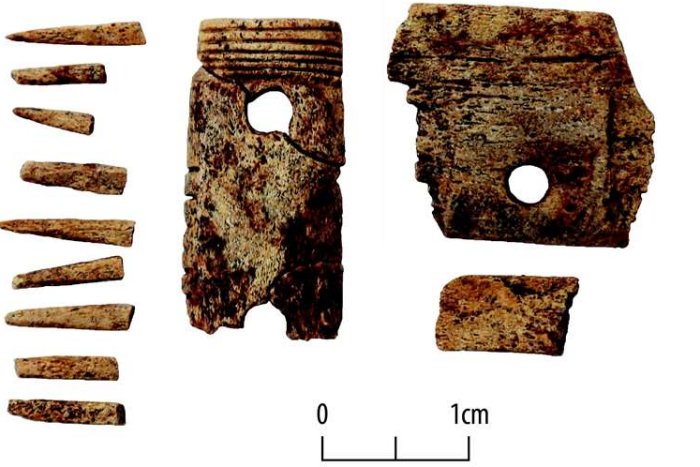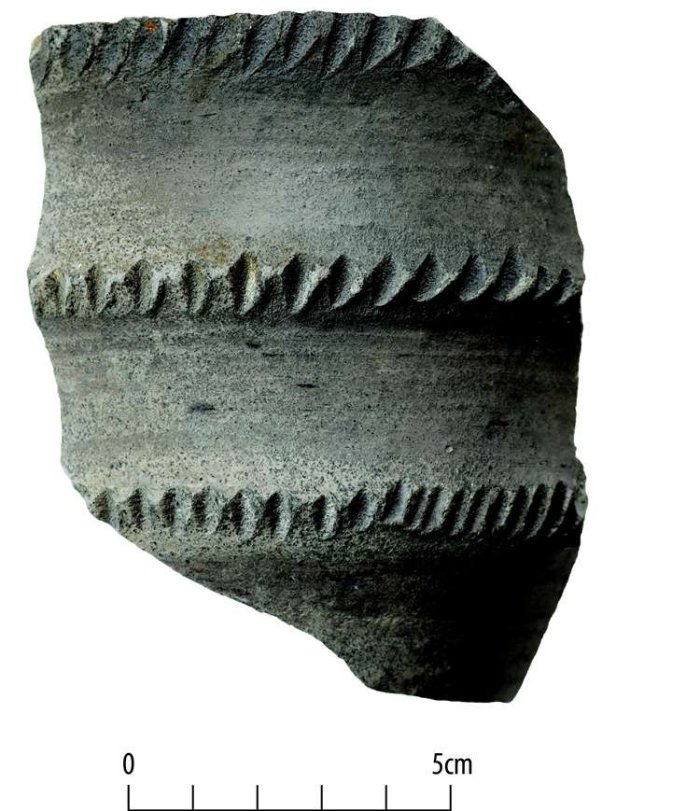Jan Bartek – AncientPages.com – A large Anglo-Saxon burial has been unearthed at Bicker Fen, Lincolnshire, UK. The discovery was part of Viking Link’s construction. A project team worked with archaeology experts who carried out a number of detailed surveys along the planned cable route and converter site location.

A number of Anglo-Saxon and Roman objects were found at the site. Here we see a an incomplete double-sided bone comb decorated with parallel incised notches. Roman: 3 rd -4 th century A.D. Image credit: Viking Link
At the site, archaeologists discovered traces of Roman occupation at the site with surveys showing a system of wide, deep ditches defining fields and activity areas and animal bone ᴀssemblage showing that people at the time kept animals onsite, including cattle, sheep, pigs, horses, and chickens.
Scientists also found evidence of an Anglo-Saxon agricultural landscape at Bicker Fen with sweeping curved ditches that enclosed areas of land. Although these areas look very different from Roman archaeology, they also reinforce the area’s historic link to farming.
When the team started to dig, they unearthed an Anglo-Saxon burial site and the remains of 16 adults, four teenagers, and two children. Scientists also found a number of ancient artifacts. Among them are a Roman bone comb and pin to hold hairstyles in place and an incense-burning vessel.
A wealth of Roman pottery was also recovered from the area, and using this to date, the features show that the site was primarily in use from the mid-2nd century AD onwards, extending into the 4th century.

Piece of Roman pottery. Roman: 3 rd -4 4th century AD. Image credit: Viking Link
The research team reports they have carefully recovered several Roman and Anglo-Saxon items that will now be cleaned and studied. A detailed study of the human remains is already planned.
“Scientific analyses to take place in the future will include radiocarbon dating and DNA analysis. A short film inspired by the site including the elements of the excavation process has been made and clips of this will be shown on National Grid’s social media accounts,” the Viking Link projected informed in a press statement.
“The events have been a huge success and it has been fantastic to welcome so many people keen to find out more about the area’s hidden past,” Peter Bryant from Viking Link said.
See also: More Archaeology News
Construction of Viking Link electricity interconnector started in 2019 and during the work, engineers have laid over 40 miles of land cable through Lincolnshire stretching from Sutton-on-Sea to the project’s converter site at Bicker Fen.
The cable runs for 475 miles under land and sea to join Bicker Fen with the Danish village of Revsing. Once complete, it will enable the countries to share enough green energy to power up to 1.4 million UK homes. National Grid also has five other interconnectors linking the UK with France, The Netherlands, Belgium, and Norway.
Written by Jan Bartek – AncientPages.com Staff





